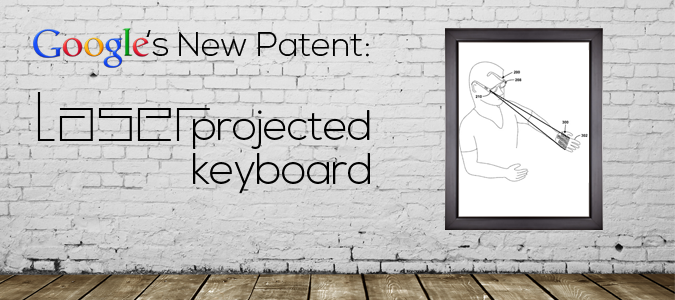Inside Google's New Patent: A Laser Projected Keyboard

Google continues to forge ahead into the realm of augmented reality with a recently unveiled feature planned for their Google Glass device, a laser projected input device.
In mid-January, they filed a patent application in the US detailing precisely what they expect from this device.
This patent calls for the addition of a small laser projector capable of providing monochrome displays opposite the already planned for camera located on the opposite side of the system.
This sort of projection interface is not a particularly fresh idea. Both Microsoft, with the Kinect, and the SixthSense device in 2009 included a similar interface style.
This addition helps the Google Glass system overcome a fundamental flaw of utilizing the augmented reality in a busy, noisy world. A user can sidestep issues with a noisy background environment by entering commands into an interface projected onto a nearby table or the palm of their hand.
Commands can be sent through tapping out the wanted information on the projection or using hand motions, like swiping, tilting, or hand rotations, to interact with the system.
Google is clearly thinking about options for display interfaces beyond just a keyboard. This opens up a range of possibilities for application developers who would be able to integrate movement and a nearly unlimited array of visual displays into their interface. One example given discusses a user interrupting a section of a laser-drawn image to make a selection amidst a group of choices. Another suggests that this style of input could result in simple games.
This is still simply a patent and these features may or may not manifest when the actual product is unveiled, but it does provide some insight into how Google plans to tackle the challenges this project presents.
It shows rather solidly that Google’s engineers are thinking in broad but practical terms for innovative solutions. The technology required for this interface is straightforward and well within the reach of the project.
The potential range and ease of use offers fluid and intuitive access to interacting with the device, providing an augmented reality interface people will be comfortable using.
